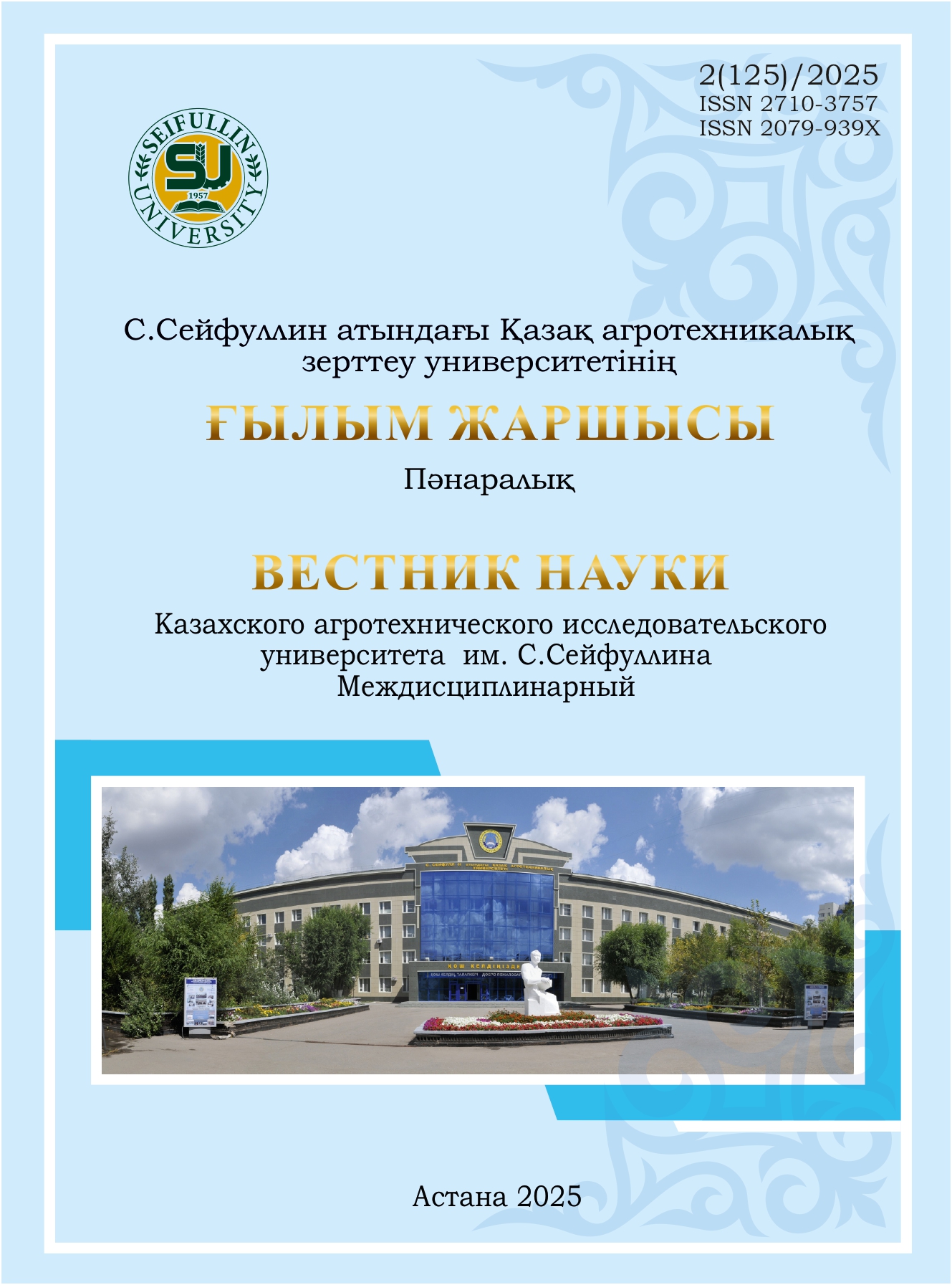Morphobiological characteristics and current condition of the pike-perch (Sander lucioperca) of the Kapshagai reservoir
DOI:
https://doi.org/10.51452/kazatu.2025.2(125).1886Keywords:
pike-perch; morphobiological indicators; spatial distribution; abundance; age composition.Abstract
Background and Aim. This article presents biological and morphological characteristics of the pikeperch population in the Kapshagai reservoir. Key indicators include absolute individual fecundity (AIF), age composition, frequency of occurrence, and catch percentage by net mesh size, as well as spatial distribution throughout the reservoir.
Materials and Methods. Biological samples were collected from the Kapshagai reservoir and analyzed at the Ichthyology Laboratory of the LLP «Fisheries Research and Production Center». Morphological indicators were compared with those of pike-perch from Lake Alakol, using cluster analysis to assess similarity.
Results. The catches were dominated by individuals aged 2 to 4 years (79.0%). Net catches showed that the largest proportion of pike perch falls on 30-40 mm (50.8%). Pike- perch were found to be widespread throughout the water area of the reservoir. Analysis of absolute individual fecundity (AIF) established a direct correlation between the age of the pike-perch and the number of eggs produced. In 2024, AIF was recorded to increase from 309.0 to 801.3 thousand eggs.
Conclusion. The research revealed that the state of the pike- perch population in the Kapshagay reservoir is satisfactory. The age composition of the caught pike perch ranged from 1 to 11 years, with younger individuals aged 2 to 4 years predominate (79.0%), and the proportion of adult individuals in the catch being relatively small (approximately 0.2-9.2%). The Fulton’s condition factor reached from 0.83 to 2.73. It was found that absolute individual fecundity increases with age. According to the research results, pike- perch were widespread in the reservoir, during the spring, summer, and autumn periods indicating that the reservoir is favorable for their growth and development.

